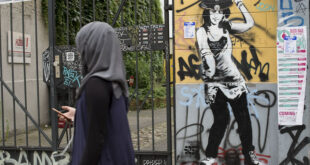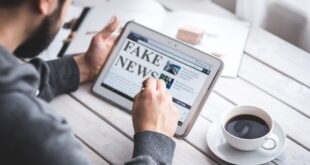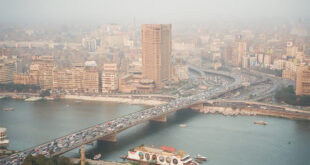Reviewed by Nadia El-Awady, American University in Cairo
Nohrstedt, Stig A. and Ottosen, Rune (eds.), U.S. and the Others: Global Media Images on "The War on Terror" Goteborg: Nordicom, 2004. Paperback. 316 pp. ISBN 91-89471-24-5. $28.
The aftermath of September 11, 2001, signaled a turning point in international communication as well as international relations, which may explain Western media behavior in the Iraq War.
Journalists have found themselves in a tight box. A profession based on truthful, comprehensive, impartial, and independent reporting was threatened in its very essence.
U.S. and the Others examines how international media professionals bent, consciously or subconsciously, under the pressures of self- and state-censorship, war-time propaganda and herd instincts that jeopardize the principles they vow to uphold.
The theme of "us" (represented by the West) and the "others" (represented here mainly by the Middle East) and how this discourse was developed in the media after September 11 is discussed from varying viewpoints in the book's sixteen chapters.
In Part 1 of the book, three articles treat from different angles the importance of rationalization under the direst circumstances. Toby Miller, New York University professor, criticizes US media for focusing only on emotions after the September 11 attacks. However, "informed, critical, academic comment" that would have helped to explain why people were feeling what they were and thus aid them in reaching a just and rational decision on what their response should be was absent.
MIT's Noam Chomsky also criticizes US media for not giving possible rationales for the September 11 attacks, and referred to many examples of US involvement in state-backed terrorism in Latin America and the Middle East.
Robert Fisk, the Independent's columnist with over 25 years of experience in reporting on the Middle East, rationalizes a brutal attack he experienced first-hand at the hands of a group of Afghan refugees in the village of Kila Abdullah on the Afghan border.
All three authors stress the importance of trying to understand "the other" and the role media must play in providing balanced information that could alter the outcomes of crisis situations.
In Part 2, Johan Galtung, Norwegian professor of peace studies, Ivar Iversen, a Norwegian journalist, and Karmen Erjavec, a Slovenian academic, offer analyses of US media coverage of the 9/11 attacks.
With a sometimes stinging approach with attitude, Galtung attempts -- often with his own personal opinions infused with his research -- to compare Wahhabite Sunni Islam with Puritan Protestant Christianity as two forms of "fundamentalism" that result in terrorism.
Iversen, on the other hand, compares the portrayal of two key representatives of modern-day terrorism, Timothy McVeigh and Osama bin Laden, in Time and Newsweek magazines. Finally, Erjavec examines the role played by US media in legitimizing the anti-terror measures passed only one week after September 11.
The dominant theme in this part of the book is the "herd instinct" of journalists. Erjavec eloquently explains the tendency of journalists to report in accordance with a society's dominant ideology at times of social crisis, as opposed to their relative adequacy in reporting on political crises where the opponents are easier to identify and balanced reporting is less demanding. The three authors note a tendency in US media after the September 11 attacks to blame "the other" without properly understanding who "the other" is. The media also tend to blame "the other" without looking "within" for internal causes. In addition, the media demonizes "the other," represented in Iversen's research by Osama bin Laden, whereas "home-grown" US terrorists are often humanized by seeking a psychological explanation for their actions.
Part 3 of the book features academics from six countries that review the international media's coverage of 9/11. The editors concede that this is perhaps the weakest part of the book because only a small number of media organizations in Western countries are studied, detracting from the initial intention of having a wider representation of international media.
The book's final section examines how the media depicted the war in Afghanistan.
Elisabeth Eide, of Oslo University College, focuses on the importance of good investigative journalism in war-time coverage and on the dangers faced by journalists covering wars from the narrow perspective of their own observations.
Jorg Becker gives a rather disjointed yet insightful look into the negative effects of symbolism, imagery, war and patriotic rhetoric, and self and state-censorship on critical, unbiased journalism through his examination of the German media coverage of the Afghanistan war. He also delves deeper into the effects of this uncritical journalism on the war process itself, as did several other authors in this book.
Although the book is not an easy read, it provides an excellent overview of how international media varied and agreed in their coverage of one particular event.
 Arab Media & Society The Arab Media Hub
Arab Media & Society The Arab Media Hub





